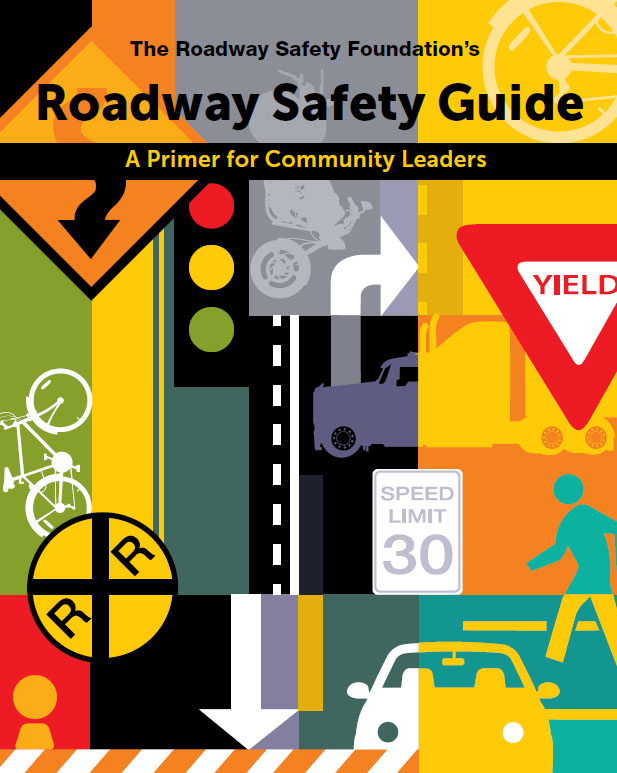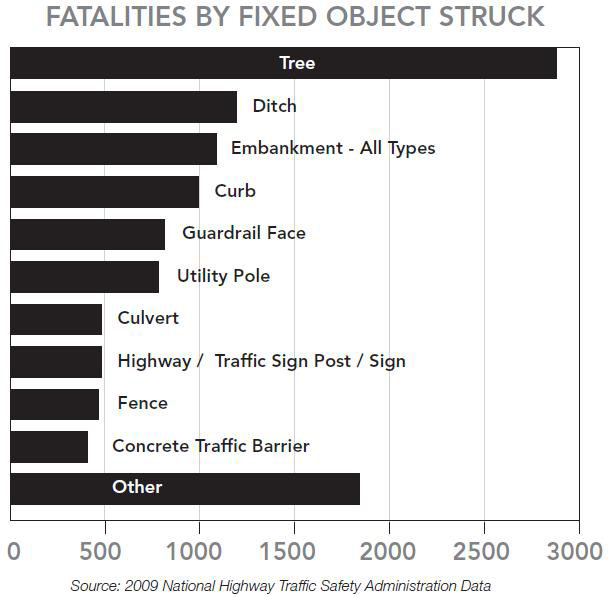TTAP Newsletter: RoadTalk
2014 Roadway Safety Guide – A Primer for Community Leaders
by Dr. Airton Kohls (Source: Roadway Safety Foundation)
The Roadway Safety Foundation has developed a guide designed to provide community leaders and local elected officials with basic information to improve roadway safety in their communities. It is intended to be a hands-on, user-friendly document, providing you with: •
- Strategies you can use to begin making roads, roadsides, and bridges safer.
- Basic information needed to work with state and local transportation departments, highway engineers, highway safety officials, civic groups, and other safety advocates.
- Clear descriptions of key funding and decision-making processes that affect roadway safety.

Roadway departure crashes account for over 50 percent of all U.S. highway fatalities each year. In 2011, 16,948 people were killed in fatal crashes of this kind. According to the Transportation Research Board (TRB), many of these casualties result from collisions with roadside objects, such as trees or poles that are located dangerously close to the side of the road. In the nation’s major urbanized areas, motor vehicle crashes cost society roughly $300 billion per year. The economic costs in medical expenses, worker losses, property damage, and emergency services compound the personal tragedies resulting from highway crashes.
There are a variety of cost-beneficial crash countermeasures and design strategies that have been shown to be effective in reducing the number and/or severity of highway crashes. Consider what the following strategies can achieve in your community:
- Removing or relocating fixed roadside objects can reduce fatal or injury crashes by 64 percent.
- Installing a median barrier system can reduce fatal/injury crashes by 88 percent.
- Rumble strips can reduce drift-off-road crashes by as much as 80 percent.
- Restoring surface friction with timely removal of ice and snow reduces crash frequency by over 88 percent, and deicing pays for itself within 25 minutes of salt application.

Chapter 1 of the Roadway Safety Guide helps answer questions regarding the identification of roadway safety problems, who is responsible for community roads, what kind of information is needed to fully describe roadway safety problems and how to work with transportation professionals to minimize roadway safety problems.
Chapter 2 covers case studies and best practices looking at effective initiatives and techniques as countermeasures to roadway safety problems. One interesting technique being successfully used in Pennsylvania and Kentucky is the HFST – High Friction Surface Treatment. It is a common driver error to approach a curve too fast, which can cause the vehicle to skid, spin, and/or run off the road. Vehicles that approach a curve too fast require greater pavement friction to maintain controlled contact with the road. HFST projects are used in the toughest road conditions and in small sections to increase pavement grip and keep vehicles on the road.
Chapter 3 is about showcasing relevant measures that provide safety for vulnerable road users, like bicyclists, motorcyclists, young and older drivers and pedestrians. Finally, Chapter 4 and 5 provide information on how to reach out to local stakeholders and guidance on potential sources of funding, as well as information on data tools available to traffic safety professionals.
So, if you would like to add the 2014 Roadway Safety Guide to your toolbox go to: /http://www.roadwaysafety.org.
Back-Contents-Forward
